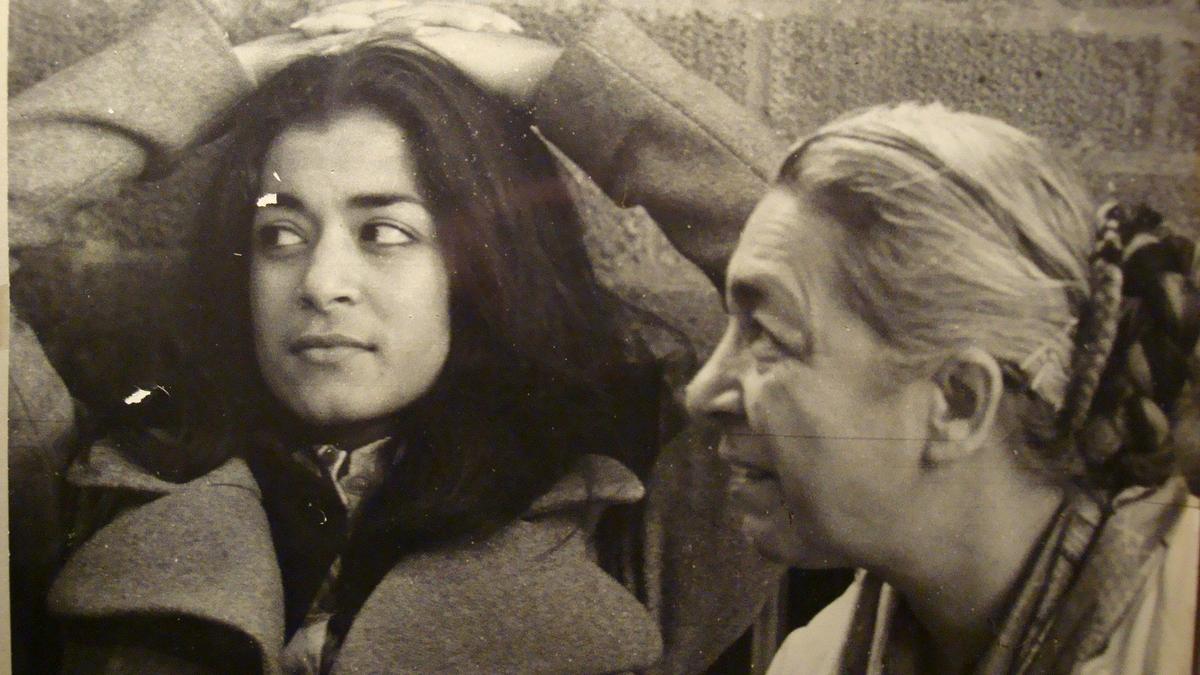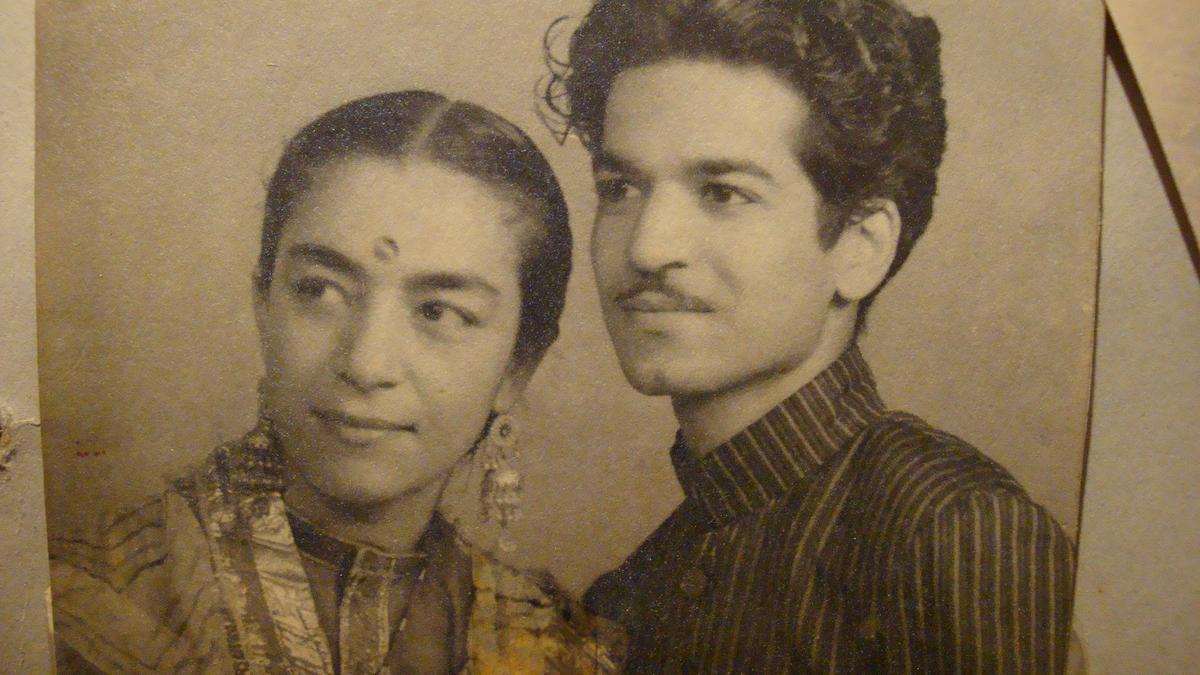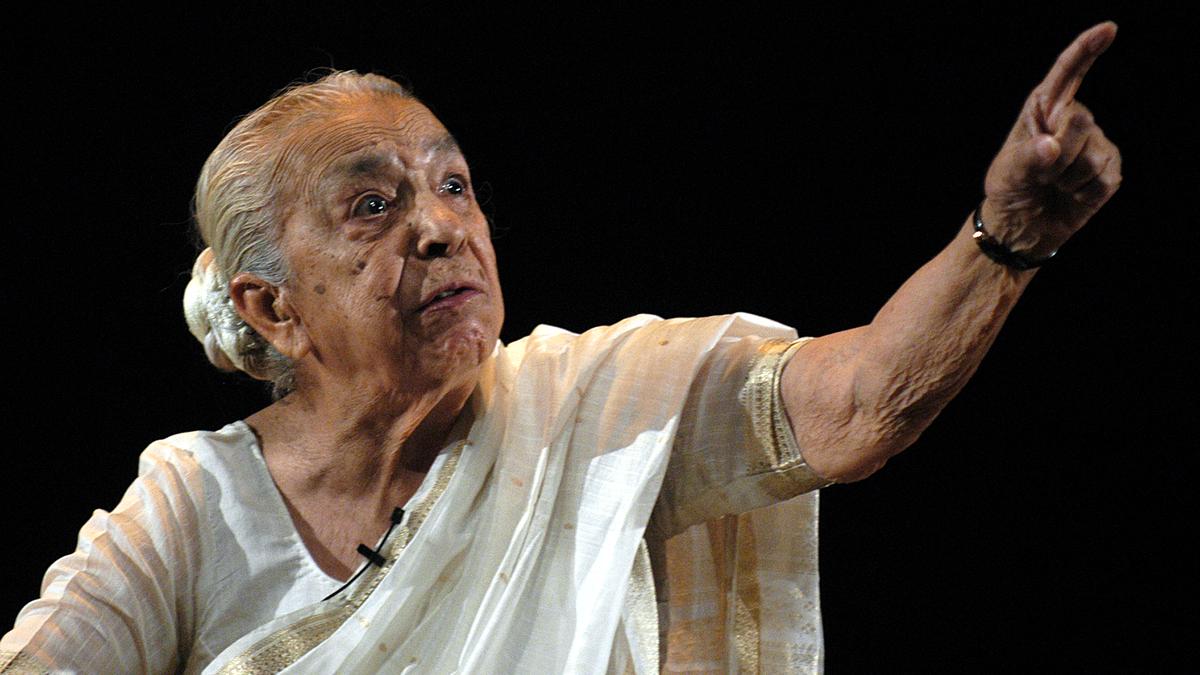Zohra Sehgal recites poetry at the Sangeet Natak Akademi festival in New Delhi on August 28, 2005. | Photo Credit: Sudarshan V
Zohra Sehgal (1912-2014) played many roles and lived life on her own terms. Born as Sahibzadi Zohra Begum Mumtaz-Ullah Khan in an aristocratic Muslim family of Saharanpur, Zohra broke all shackles at a time when it was unknown for women to challenge norms and make choices.
Since her demise, her Odissi dancer-daughter Kiran Sehgal has been organising an annual tribute event dedicated to the art. “I started this festival in 2016. Art was her identity. So this remembrance event is dedicated to her passion for acting and dance,” says Kiran. The Zohra Sehgal Trust in collaboration with India International Centre, supported by the Raza Foundation, is presenting its annual Zohra Sehgal Kala Mahotsav at IIC, Delhi this weekend.
Like previous editions, this year’s line-up is unusual too. The festival begins with fado, a Portuguese-inspired form of music that Goans have embraced. It blends music and poetry. Fado was inscribed on UNESCO’s Intangible Cultural Heritage List in 2011. Meaning ‘fate’ or ‘destiny’ in Portuguese, fado has a melancholic feel and its singers were traditionally never invited to perform. At the festival, Shrushti and Swara Prabhudesai will be accompanied by guitarists Franz Schubert Kotta and Sherwin Corea.

Kiran with mother Zohra | Photo Credit: Courtesy: Kiran Sehgal
The second day will feature a journey of the Maharashtrian folk dance Lavani, showing its evolution since the 1800s and narrated in a traditional storytelling format. It will be presented by Kali Billi Productions, Savitri Medhatul and will feature three dancers. Zohra Sehgal had spent many years in Mumbai as a dance director at Prithvi Theatre, so it is appropriate to focus on the Maharashtrian dance form. Apparently, when she and her husband Kameshwar had to leave Lahore in the 1940s due to unrest, they moved to Bombay and Zohra approached Prithvi Theatre for a job, as her sister Uzra Butt worked there. Apparently Prithviraj Kapoor said there were no jobs befitting her stature in the field of acting, but since she was a trained dancer, she was asked to head the dance department.

Zohra and Kameshwar – A life in art | Photo Credit: Courtesy: Kiran Sehgal
Previous editions of the Zohra Sehgal Arts Festival have included theatre, qawwali, storytelling and dance in various languages. The performance by Bengali ‘dhaak’ artists was well received.
Organising this festival reflects Zohra’s ability to draw attention to unknown aspects of art and give them visibility. “She herself loved all the attention she got,” Kiran laughs.
Poetry was another area Zohra excelled in; her recitations were always memorable. However, what many people don’t know about Zohra is that she spent more than two decades in London, where she made waves in British television and films. When she moved back to India in 1987 to Delhi to her daughter Kiran, she focused more on Hindi films and continued acting until her death in 2014.
According to Kiran, “My mother considered herself a citizen of the world. She did her schooling from Queen Mary in Lahore, went to Germany to learn from dance pioneer Mary Wigman, lived in Almora for a while and was associated with Uday Shankar’s group. After getting married in Lahore, she had to come to Mumbai.
The Zohra Sehgal Arts Festival does not require tickets for entry and is entirely run by donations from well-wishers.
Published – September 26, 2024 12:31 pm IST
